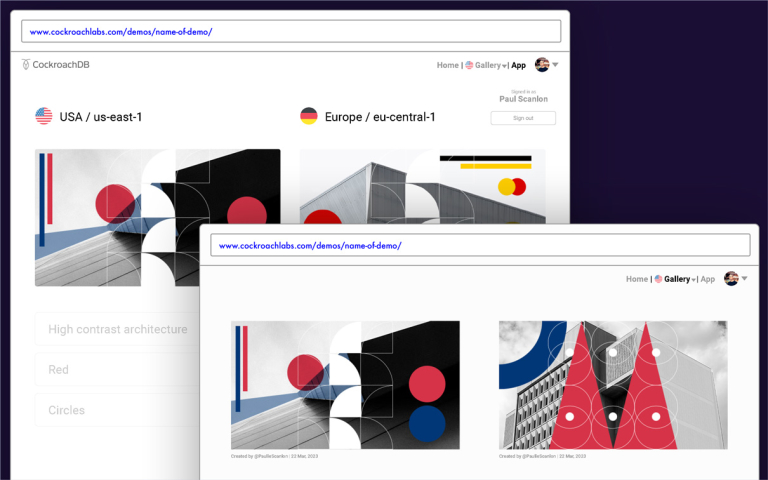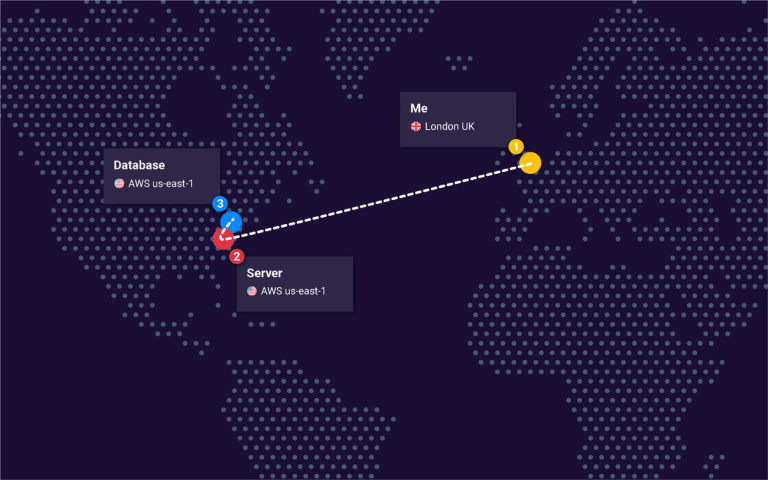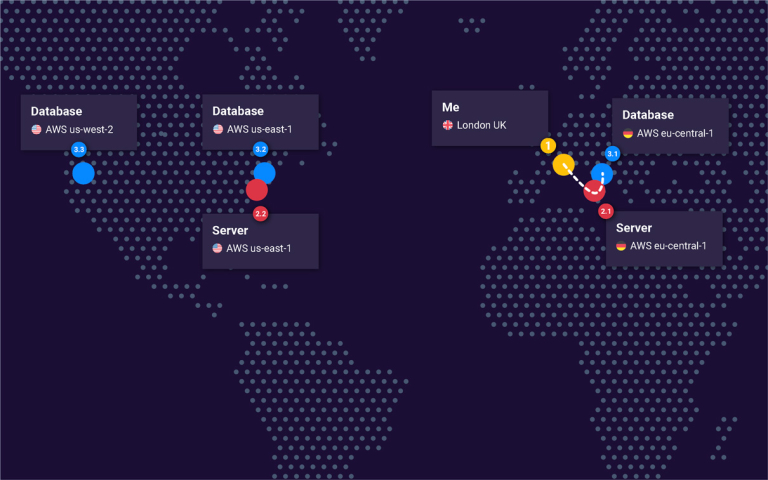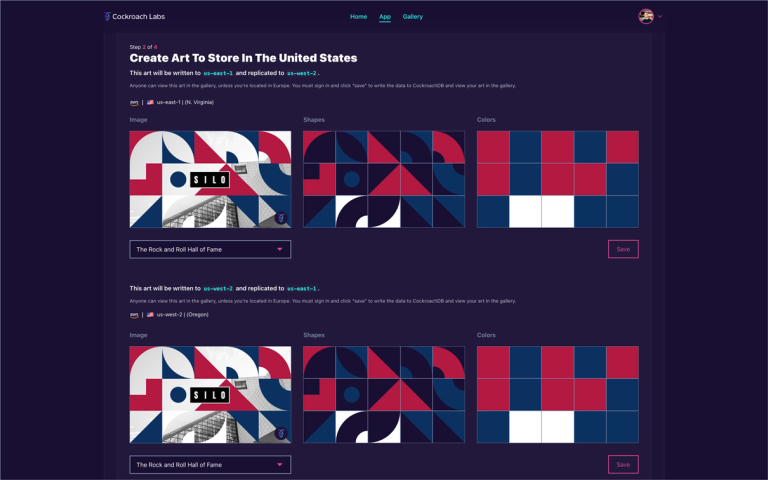The Art of Data Residency and Application Architecture
Project Overview
This is to be my second project since joining Cockroach Labs but the first project that fully aligned with a product launch and was even featured on the product launch page.
This project was hard! and required my entire skill set. I came up with an idea, scamped it up and pitched it to the PMM team. I then designed the whole application, built the front-end and developed a multi-region Node.js Lambda API which was deployed using AWS. And finally, I wrote about the project for the Cockroach Labs blog: The Art of Data Residency and Application Architecture.
I didn’t do this alone though, Rob Reid helped with the CockroachDB config and with fleshing out the idea to check it was technically possible. Thanks Rob, it was great working with you!

Problem
I wrote about this before on The New Stack: The Distance from Data to You in Edge Computing but the short(er) version is as follows:
When an end user logs in, or uses an application to perform a task, the data has to be transferred to and from a database.
The distance the data travels contributes to the time it takes for the transfer to complete. The greater the distance, the longer the end user will likely see a “loading” state. But wait, there’s more…

When end users request or posts data, they’re not directly interacting with the database (because it’s not secure), these requests are instead, routed via a server (which is secure). The location of the server in relation to the database and the end user all contributes to the total distance traveled. Get this architecture right and you’ve got an application that feels snappy, get this wrong and you’ve got end users that aren’t happy.
Solution
The solution to this problem is to shorten the distance between end user, server and database. Or to put it another way. Multi-region application architecture.

In this launch CockroachDB released multi-region serverless and, (if you know what you’re doing), its super simple to setup (~10 seconds) and just as easy to configure (~10 minutes) but unfortunately, as I mentioned above, the database is only one part of a two part puzzle. To create a truly multi-region application, developers need to configure multi-region servers, this is nowhere near as easy.
Insight
When I met with our Sales Engineers it became clear that many customers hadn’t considered the requirement to deploy their servers to multiple regions. It was also mentioned that the broader concept of a multi-region database wasn’t completely understood.
The Idea
To demonstrate how both a multi-region server and database setup can work together I had to build the real thing. There are a few concepts that are demonstrated in the Silo application.
The first requirement was a general awareness of multi-region serverless. To achieve this I wanted to build an application where users could interact and create something. The hope being they share and thus, help spread the word. I chose Art. Using the Silo application users can create and save their own unique artwork to share… but there’s a catch, i’ll explain that in a moment.

The second requirement was to explain the importance of correctly pairing the server and database architecture and describe the general approach using AWS.
The third requirement was to demonstrate one of the benefits of a multi-region setup. We chose to focus on Data Residency. This configuration, or topology refers to a method by which data can be pinned to any one of the regions where the database has been deployed. This has two main benefits. The data is stored closer to the server and the user, resulting in faster data transfer and it can also be used to domicile data preventing it from leaking over to regions where it shouldn’t reside.
… and here’s the catch.
When users create artwork using the app, artwork created using US imagery and colors from the US flag are saved in the US. Artwork that is created using EU imagery and colors from European flags is saved in Europe.
Users of Silo can see both when they’re creating the artwork but when they preview their artwork or visit the gallery they’ll only see data that has been stored in their “local” region. This is what I’ve been referring to as: The Art of Data Residency and Application Architecture.
Video Walk through
Here’s a short video by Rob Reid that explains a little more about how the app works, and how we used CockroachDB regional-by-row topology and route requests via an AWS Route 53 Hosted Zone.
🎨 Make art 🌎 Learn about multi-region and data residency in CockroachDB #serverless ☁️
— CockroachDB (@CockroachDB) May 23, 2023
🖼️ This is Silo. Create your masterpiece at https://t.co/7mGlk6xPxz pic.twitter.com/yTVUA8RPgS
Blog
Or, if you’d prefer, here’s a full write up about the project, it’s quite long, but worth it. The Art of Data Residency and Application Architecture